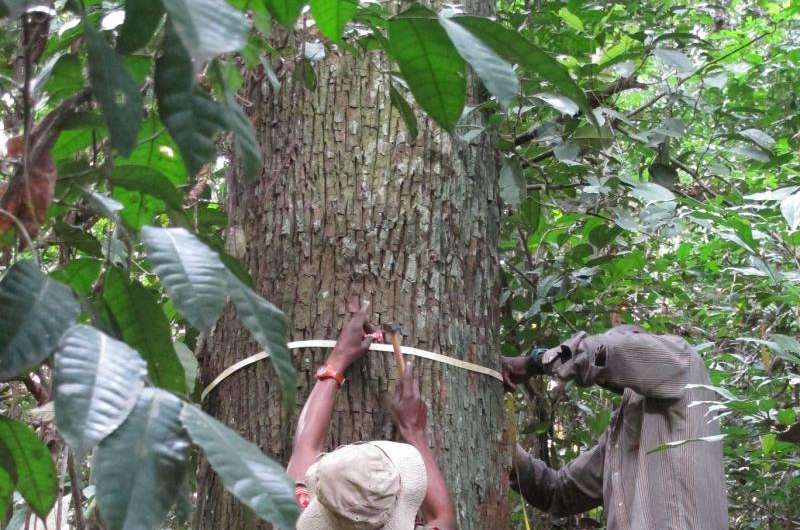Models for predicting carbon levels in Central African forests

ULB and Gembloux Agro Bio-Tech (ULg) researchers are developing models for predicting carbon levels in Central African forests based on measuring only 5% of all trees. In addition to being a lot more effective, their work is also revealing for the first time in Central Africa the key role played by "hyperdominant" species for storing forest carbon. Their research is published in Scientific Reports, an open access journal belonging to the Nature group.
Several studies have recently shown that large trees, and about 1% of the species are the main structural elements of the forests of the Amazon basin. But what about Central Africa? And how can we use these results to better understand and monitor the status of tropical forests, covering large and often inaccessible areas?
These questions were behind a study led by researchers from the ULB's Landscape Ecology and Plant Production Systems Laboratory (Interfaculty School of Bioengineering) and the ULg's Gembloux Agro Bio-Tech (BIOSE Department) and published this 17 August in the Scientific Reports journal under the title "Seeing Central African forests through their largest trees". On the basis of a dataset covering 4 Central African countries (Cameroon, the Central African Republic, the Democratic Republic of the Congo and Gabon), this team has been able to show that the forest structure, considered in this case via the ratio of large to small trees, is particularly stable in Central Africa. This finding has in turn led to the development of models able to predict the structural characteristics of the whole tree population on the basis of information collected solely from a few large trees.
Up to now, some 400 trees per hectare needed to be measured and identified on the ground in order to measure the carbon level of a forest in Central Africa. On the basis of the model developed in the project, the researchers have been able to show that, by measuring just 5% of these individual trees, it is possible to assess the carbon level of the forest population with a margin of error below 15%.
This constitutes a major step forward for research into climate change, as it allows methods of estimating the stock of carbon in a dense forest to be greatly simplified, thereby reducing costs.
From a practical perspective, through only measuring trees with a trunk diameter exceeding 50 cm (at 130 cm above ground), only 7% of trees need to be measured. This in turn allows 90% of the variation in forest carbon stocks to be explained. Moreover, this result should allow us to minimise the uncertainty of maps predicting carbon stocks compiled on the basis of satellite pictures through concentrating on those objects directly observable from space, i.e. the largest trees.
A further "first" for Central Africa, this study has identified a number of dominant species contributing disproportionately to total carbon stocks, as just 1.5% of the identified species contain more than 50% of the carbon in the forests studied. Referred to as "hyperdominant", these species show, as in the Amazon basin, that just a small number of species are particularly important for storing forest carbon.
However, contrary to what has been observed in the Amazon basin, the study results show that a significant share of Central African "hyperdominant" species are not particularly large, only rarely exceeding a trunk diameter of 70 cm (measured at 130 cm above ground). These species are hyperdominant not on account of their size, but due to their profusion and widespread prevalence throughout the Congo basin.
These "hyperdominant" species fulfil key functions in the ecosystems and play a major role in storing carbon. An exhaustive identification of these species is therefore a top priority for gaining a better understanding of the ecological and functional differences between tropical regions and for developing appropriate conservation strategies.
Journal information: Scientific Reports
Provided by Université libre de Bruxelles




















